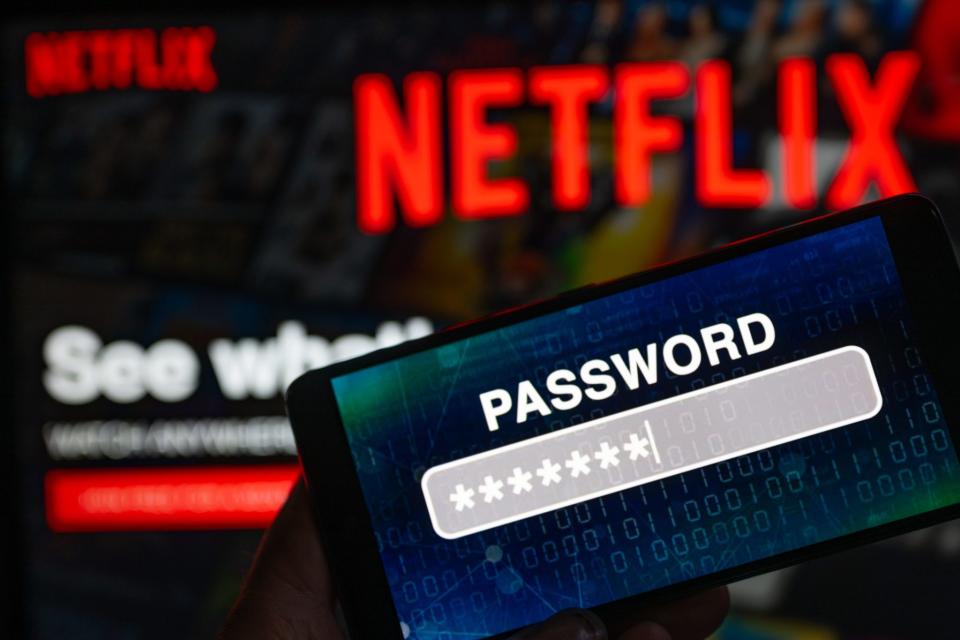Netflix’s password crackdown has stirred up a wave of subscription revenue that still has a lot of room to run

Netflix began cracking down on users who share log-in credentials one year ago, in an effort to get more viewers to pay for individual subscriptions. The move paid off, contributing to some of the streamer’s 30 million additional subscribers last year—and it’s a wave that Netflix will continue to ride this year, helping to buoy Netflix’s top line as it competes in an increasingly crowded market, according to analysts.
Company executives previously estimated that 100 million people globally were using a friend’s or family member’s password to access the service behind Bridgerton and Stranger Things. If that is the case, Netflix has only scratched the surface of the freeloaders it could potentially convert to subscribers, Macquarie analyst Tim Nollen wrote in a note to investors on Monday.
“We believe Netflix has clearly tapped into that 100 million paid sharers but still has further to go to convert more,” he wrote. Nollen estimated new members will continue signing up for the platform as a result of the password sharing crackdown through the end of 2024.
Even if some of this group doesn’t sign up for new accounts, there are other ways the users can boost Netflix’s revenue. The company offers a paid sharing service, in which subscribers can allow multiple users on their account for a higher price. The option intends to attract former password sharers, who can get the ad-free experience for a price cheaper than signing up for their own account. The company doesn’t disclose how many subscribers opted in for paid sharing, but the service did contribute to revenue growth last quarter, Netflix’s shareholder letter said.
The crackdown is also driving new customers to the cheaper advertising tier, where Netflix has the ability to generate more revenue per person, depending on how much content—and how many ads—they watch. And Goldman Sachs expects Netflix to find a deluge of new advertisers at its feet in the coming months as marketers continue to shift their spending toward digital media, analyst Eric Sheridan said in a Monday report.
The analyst notes precede Netflix’s first quarter of 2024 earnings announcement on Thursday. Over the past four quarters, the company has beat analysts’ revenue targets half the time. It surpassed expectations on earnings per share for three of the past four quarters, but fell short by 5% in the most recent, fourth-quarter report.
Netflix’s stock has soared in the past year, with two of the biggest rallies following its two most recent earnings announcements. Since this time last year, Netflix stock has nearly doubled to $620 per share, almost catching up with its 2021 high of $692.
More than half of the 41 analysts who cover the stock have a “buy” or “strong buy” rating on Netflix shares, while 14 analysts suggest holding, according to Yahoo Finance. Wall Street expects that Netflix generated $9.27 billion in revenue during the first three months of the year, up roughly 14% from the same time last year. The earnings per share consensus is $4.52, versus $2.88 in the year-ago quarter.
Analysts, on average, think Netflix will add 4.88 million subscribers globally this quarter. UBS’s John Hodulik has a higher forecast, and he credits the efforts around password sharing to his estimate of 7.8 million sign-ups, according to a Monday report.
More price hikes to come
During Netflix’s most recent earnings call in January, co-CEO Greg Peters said that after taking a temporary break from raising its prices, the company is “back to business as usual.” What that means, analysts agreed, is that a price increase for Netflix’s standard tier, which costs $15.49 per month in the U.S., is imminent.
The tier costs less than the equivalent streaming services on Disney’s Hulu and Warner Bros. Discovery’s Max, which cost a monthly $17.99 and $15.99, respectively. Because Netflix licenses content from both Disney and Warner Bros. in addition to its own original shows and movies, it can justify a price hike, Macquarie’s Nollen said.
Netflix typically announces an upcharge every one to two years, according to a Fortune analysis of historical data. The standard Netflix plan, which does not include ads, has cost the same price since January 2022, while executives upped the price on both of the other ad-free tiers in October. Despite consumer frustrations over having to continue shelling out more money for the service, it’s about time for a markup of Netflix’s standard option.
This story was originally featured on Fortune.com

 Yahoo Finance
Yahoo Finance 